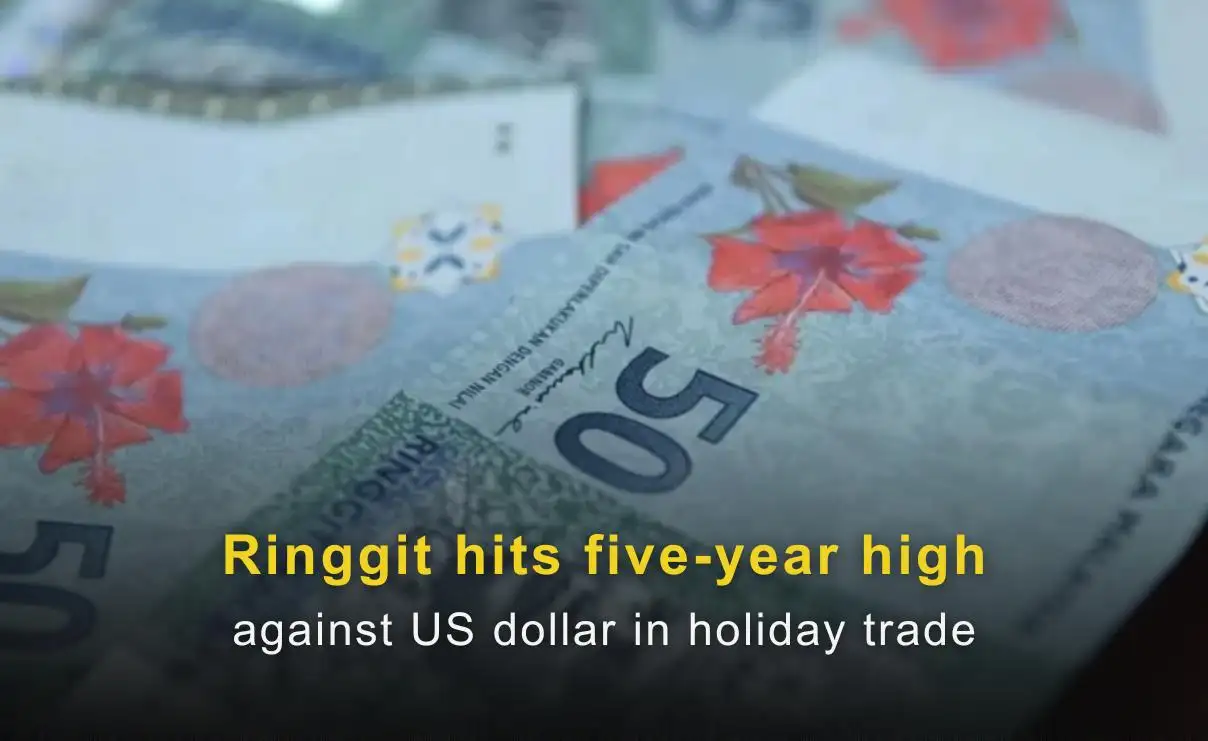US and Chinese inflation the focus for the week ahead
Abstract:The ASX200 concluded its third consecutive week with losses, plummeting by 1.34%. Surprisingly, the RBA's decision to maintain rates for the fourth consecutive month did not bring relief to the index.

The ASX200 concluded its third consecutive week with losses, plummeting by 1.34%. Surprisingly, the RBA's decision to maintain rates for the fourth consecutive month did not bring relief to the index. Beginning the week, US shares were at the forefront of the decline due to elevated bond yields, causing concerns about valuations and perpetuating apprehensions about long-term higher rates. Nevertheless, US stocks made a comeback towards the end of the week following a mixed jobs report, ultimately leaving the S&P500 with a 0.5% gain for the week.
3 things that happened last week:
1. RBA keeps rates on hold for the fourth consecutive month
Michele Bullock‘s first board meeting as Governor did not produce any surprises, with rates remaining at 4.1%. Given this was widely expected, Bullock’s debut rate statement was the focus – however, she did not offer much in the way of anything new. The board stuck to their previous comments that further tightening may be required and that it will monitor further incoming data. This makes October a big month ahead, with every single data point under the microscope from investors, with a particular focus on Q3 CPI. The recent oil-induced inflation jump, although a risk for the RBA, is unlikely to single-handedly force it to hike again and therefore, rates will likely stay on hold for the remainder of 2023. The RBA will likely keep its hawkish bias into 2024, though, with further cooling still needed from the labour market and consumers.
2. Block shares hit new lows
Despite tech stocks enjoying a strong 2023, Afterpay‘s parent company, Block (SQ2), hasn’t followed suit. The stock has been in free fall since reporting earnings in early August, with shares down 26% this year, falling to $67 last week, a record low since listing on the ASX200 in 2021. The sell-off follows what looks to be a difficult period ahead for the company with the expectation of a weaker consumer – notable given Blocks exposure to small businesses.
3. A winner and loser last week from the S&P/ASX200
Every sector finished in the red last week, so there werent many winners to choose from. However, Fisher and Paykel (FPH) shares jumped 3.55%, with the Healthcare sector showing some resilience.
Core Lithium (CXO) shares had another poor week, adding to what has already been a bad year for the lithium miner. Shares fell 13.6% after JPMorgan downgraded its outlook on the lithium sector.

ASX200 Market Movers by Sector
3 things to watch for the week ahead:
1. Consumer Confidence AU
On Tuesday, the latest monthly figures for the Westpac-Melbourne Institute Consumer Sentiment index will be released. Last month, the index fell by 1.5% month-on-month to 79.7, which continued the trend of declining confidence that has continued since a brief spike of 81.3 in July. An additional 1-2% drop in confidence is on the cards for October, given the RBA‘s string of consecutive rate hikes earlier this year is now well and truly being felt by households. The most recent ASX earnings season indicated that many Aussies have tightened the purse strings on consumer goods, and while the Christmas period will undoubtedly provide a boost to retailers, there’s not much relief on the horizon for households in the interim. That said; the RBAs hiking cycle seems as good as done. It would take a significant surprise in data to change that, especially with the moderation of oil prices in recent days. Therefore, consumer confidence could begin to pull out of a decline anytime from now.
2. US Inflation
Following last week‘s key jobs numbers, it is another big week of US data, with monthly CPI handed down on Thursday this week. US core inflation has continued to trend lower since March, and this week’s reading is set to see another fall to 4.2% from 4.3% the month prior. The risks in this inflation report, like we saw locally in the last few weeks, come from headline inflation following the recent spike in oil prices. Expectations are for headline inflation to remain at 3.7%, but there‘s a chance this could move higher to 3.8%, with the decline in inflation stalling since June after reaching a low of 3%. The fall in oil prices in recent days might give investors some relief that the Federal Reserve won’t be forced to hike rates again, especially as consumer spending slows and core inflation continues to trend lower. Equity markets have been spooked over the last few weeks over the US economys strength and rise in 10-year US Treasury Yields. However, a better-than-expected inflation reading would provide a much-needed boost for markets and help subdue some concerns of rates being higher for longer.
3. Chinese Inflation
After moving into deflation in July, Chinese inflation is set to rise modestly in September to 0.1% due to higher energy costs. Recent policy support won‘t be an overnight success and will take time to drive demand that will lift prices. Despite recent measures, concerns remain over the Chinese economy as the property crisis continues to deepen and put further pressure on growth. On top of CPI, this week, loan data will be handed down, another key data point for demand after rising last month. Unfortunately, given the uncertainty over China’s recovery, the local materials sector remains under pressure, with commodities seeing continued volatility in the near term. The good news is that the worst has likely passed, and we should begin to see Chinas economy continue to stabilise, with a recent pick up in production and retail sales, which translates into better news for the local market.

Read more

Hong Kong Regulator Warns Against CoinCola
Hong Kong’s financial watchdog, the Securities and Futures Commission (SFC), has issued a public warning against CoinCola, adding the platform to its Alert List of suspicious virtual asset trading platforms (VATPs). According to the SFC, CoinCola operates through the website and is suspected of conducting unlicensed virtual asset activities while appearing to target or operate in Hong Kong.

Ringgit hits five-year high against US dollar in holiday trade
The Malaysian ringgit extended its rally, reaching a five-year high against the US dollar, trading in a narrow range of RM4.04-RM4.05.

Inside the Elite Committee: Talk with Narinpat Sittivongseth
WikiFX has launched the “Inside the Elite” Interview Series, featuring outstanding members of the newly formed Elite Committee. During the committee’s first offline gathering in Dubai, we conducted exclusive interviews and gained deeper insights into regional market dynamics and industry developments. Through this series, WikiFX aims to highlight the voices of professionals who are shaping the future of forex trading — from education and compliance to risk control, technology, and trader empowerment.

NFA Charges Japan’s Forex Wizard and Mitsuaki Kataoka With Delaying Withdrawal Requests
The U.S. National Futures Association (NFA) has filed charges against Forex Wizard, a Japan-based forex trading operation, and its principal Mitsuaki Kataoka, accusing them of failing to process customer withdrawal requests promptly.
WikiFX Broker
Latest News
Spring Rally in Chinese Equities Signals Potential Lift for AUS and NZD
China’s Export Resilience: A Structural Pivot Towards the 'Global South'
Silver Smashes $70: Is the "Forced Central Bank Buying" Thesis Playing Out?
Biggest 2025 FX surprise: USD/JPY
NFA Charges Japan’s Forex Wizard and Mitsuaki Kataoka With Delaying Withdrawal Requests
Why Your Entries Are Always Late (And How to Fix It)
【WikiEXPO Global Expert Interviews】Robert Hahm: From Asset Management to AI Innovation
Treasury vs. Fed: Bessent leads Trump's Campaign to Reshape US Monetary Policy
Ceasefire on the Brink: 14 Nations Condemn Israel as Geopolitical Risk Premiums Rise
Ringgit hits five-year high against US dollar in holiday trade
Rate Calc


